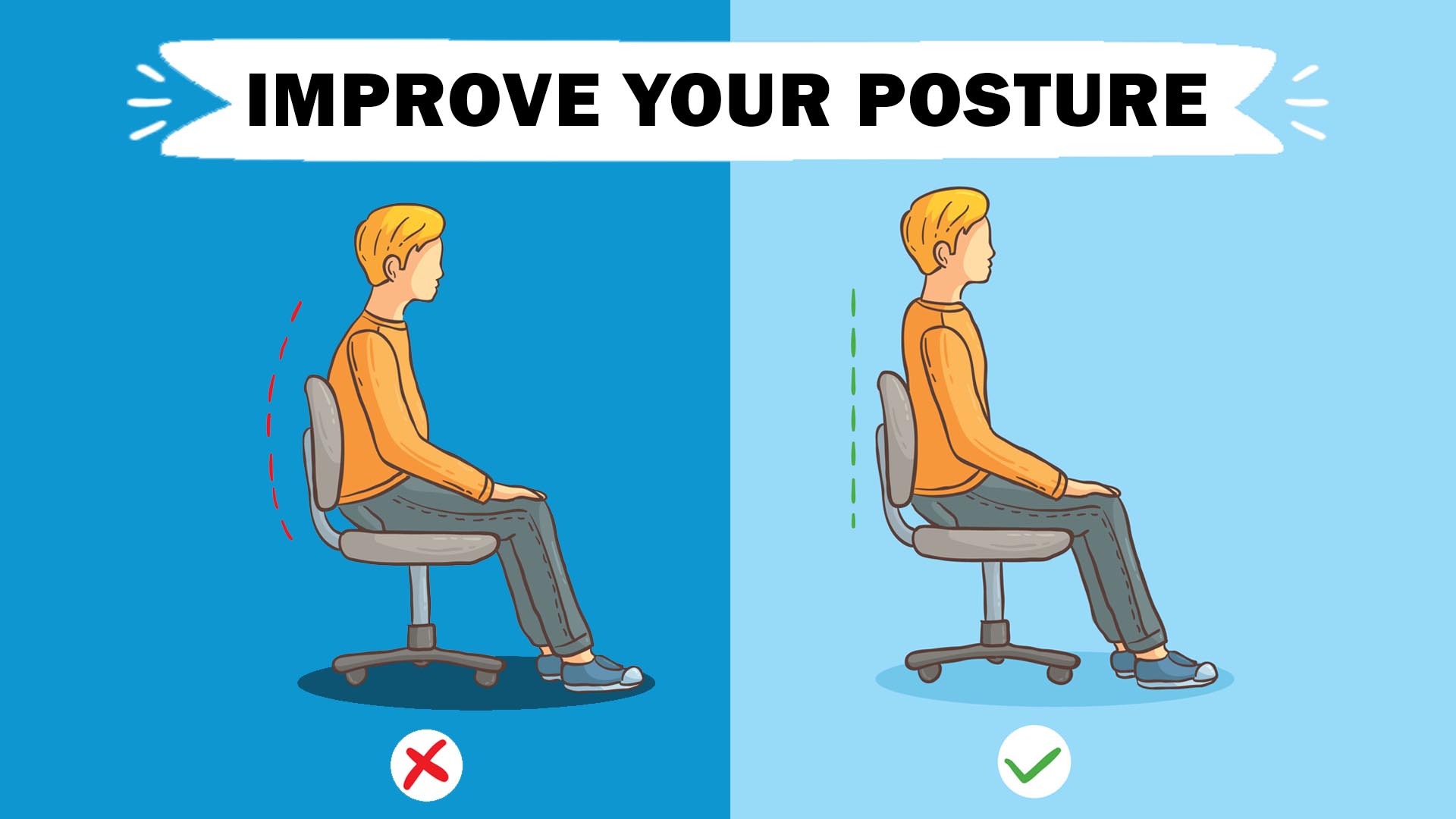In the present day, we’re sitting down more than ever. Many of us work at our desks and sit in front of our computer screens for large parts of the day, before moving to sit down on the sofa to relax in front of the television.
We also spend lots of time sitting down while traveling, either on the bus, train, or in the car, so we must be sitting correctly. Failing to do so can take its toll on our body’s muscles, joints, and ligaments and cause health issues later in life.
If you have a good posture, you will have improved balance, fewer aches and pains, less fatigue, and better blood circulation around your body.
However, unless you actively think about improving your posture, it can be easy to fall into bad habits and slouch in front of the screen when your attention is drawn elsewhere. Let’s take a look at six simple ways in which you can improve your posture.
1. Don’t slouch.
Slouching is what happens when you let your shoulders and head sag while sitting down. Your back is hunched over, and you’re not sitting up straight.
If you’re not alert, your body will naturally slouch, and your posture will be affected as a result. You must train your mind to recognize when your body is slouching and correct your posture whenever you notice.
Sitting correctly on a chair involves keeping your feet firmly on the floor and sitting back fully in the chair, so it supports your spine. Correcting your posture when you notice yourself slouching is the first important step towards improving your posture.
2. Don’t sit in the same position for too long.
Sitting in the same position for a prolonged period of time can cause muscle tension and fatigue. This is even worse if you’re sitting in the same place while slouching.
To prevent muscle fatigue, ensure you get up from your sitting position and move around for at least a couple of minutes every half an hour.
You should walk around and perform some simple stretches to release any tension built up in your body, and then return to your seat focused and ready to resume your work.
3. Stand tall and straight when walking.
People often mistakenly think that posture is only something to be concerned about when you’re sitting down.
However, the reality is that it’s equally important to recognize your posture when you’re standing up. When you’re walking, you should keep your shoulders well balanced and straight and walk tall, as if you’re trying to balance a book on your head.
When you’re walking, it’s best to keep your knees bent and transfer most of your weight to the balls of your feet, as opposed to your toes. Also, pay attention to your head position when walking; it should be level, not bent forward, with your ears in line with your shoulder.
4. Perform planks to strengthen your core.
Planking is a straightforward exercise you can perform anywhere, without any equipment, to improve your posture and build your core strength.
Having strong core muscles (like your abdominals and lower back) significantly improves your posture, so performing daily exercises to strengthen your core will ensure you maintain a good posture.
To plank, you should do the following:
· Lie down on your front and push up from the ground. Your hands should be directly below your shoulders.
· Lower onto your elbows and straighten your legs, ensuring your feet are hip-width apart.
· Tighten your core and keep your back straight. You should hold this position for thirty seconds and then rest. Repeat as many times as you feel comfortable with.
5. Sleep properly.
The way that you sleep at night significantly affects your posture. If you sleep on a soft mattress, it might be comfortable, but it’s not providing adequate support to your core throughout the night.
It’s much better to sleep on a firm mattress if possible, as it will help to hold your spine’s natural shape.
What’s more, you should sleep under a pillow that ensures your head is level with your spine. If your pillow is too thick, it will cause you problems in the long term, so make sure your head is in a decent sleeping position before you rest your eyes.
Improving your posture is about so much more than just sitting straight. You need to ensure you sit, stand, walk, exercise, and even sleep with your posture in mind.
If you don’t bring your attention to your posture, it is extremely difficult to correct slouching and other bad habits.
These five simple steps will help you improve your posture and will make sure you don’t suffer from significant aches and pains as you grow older.



